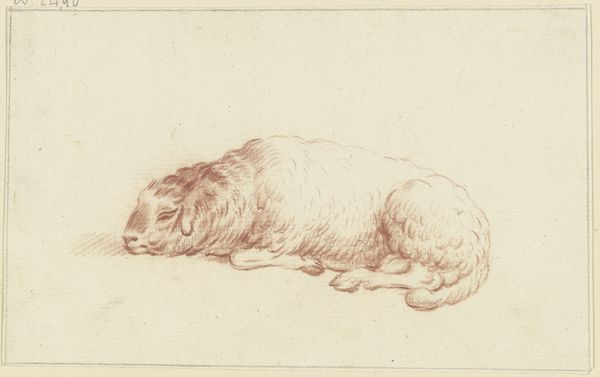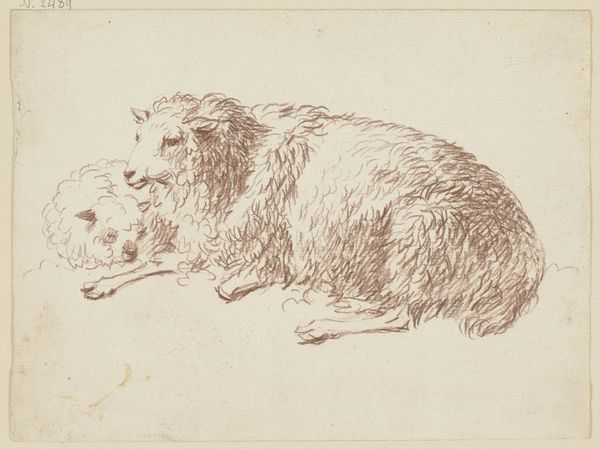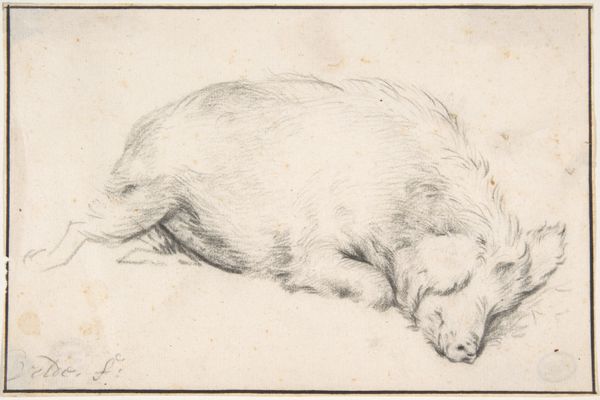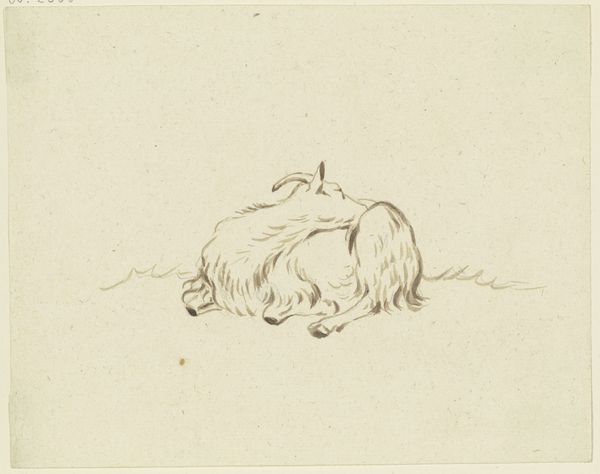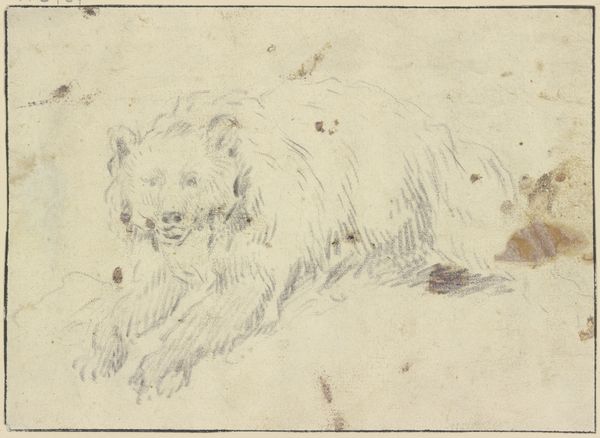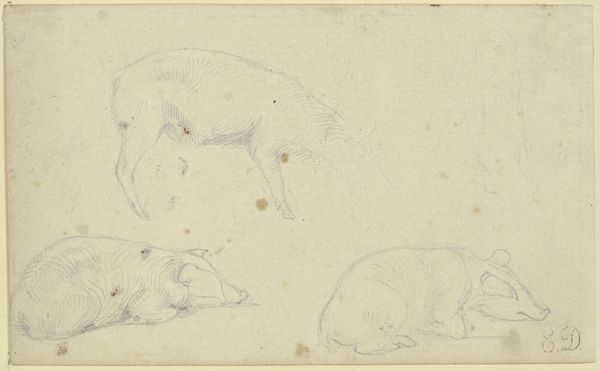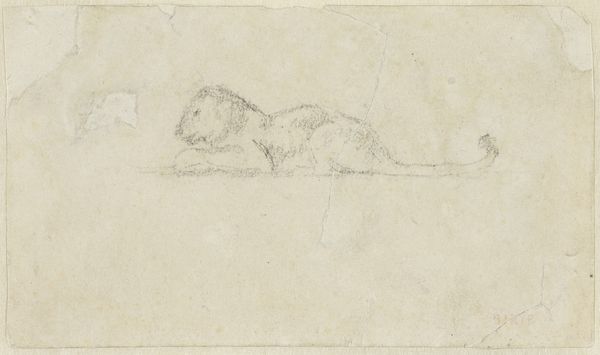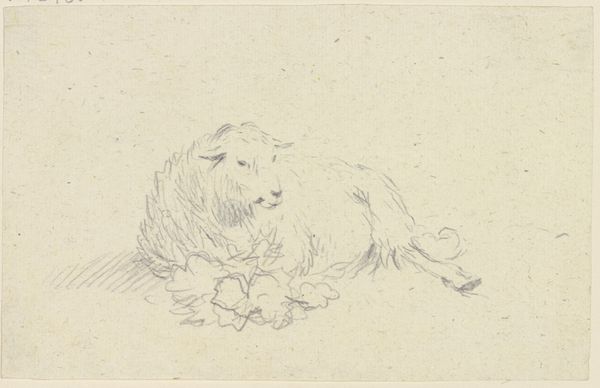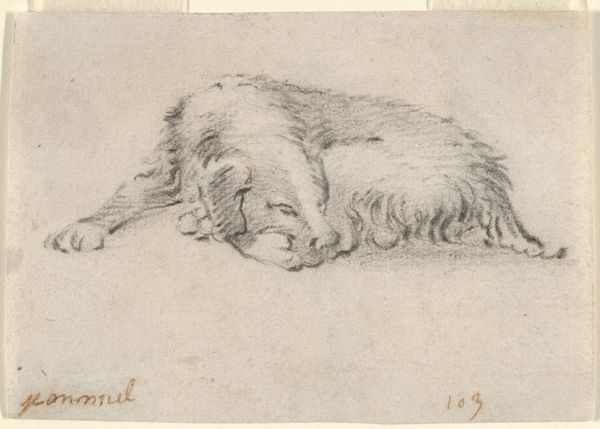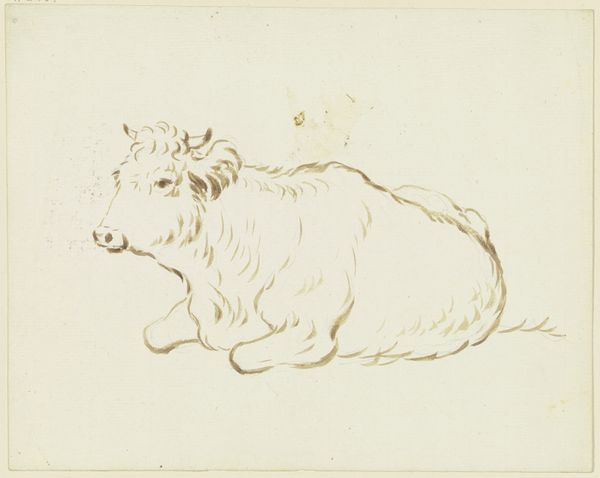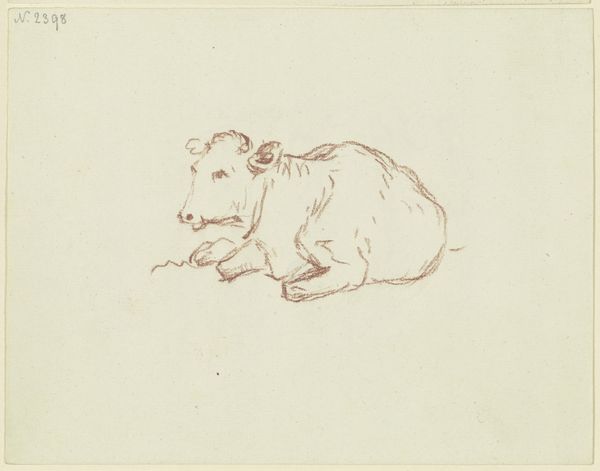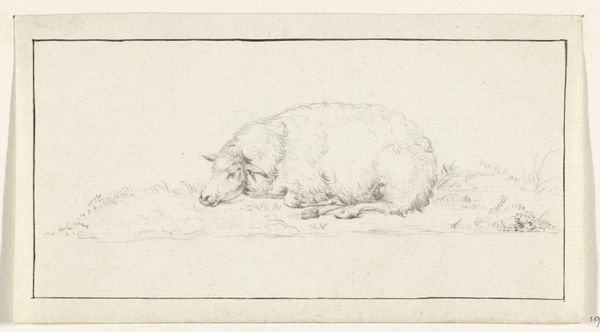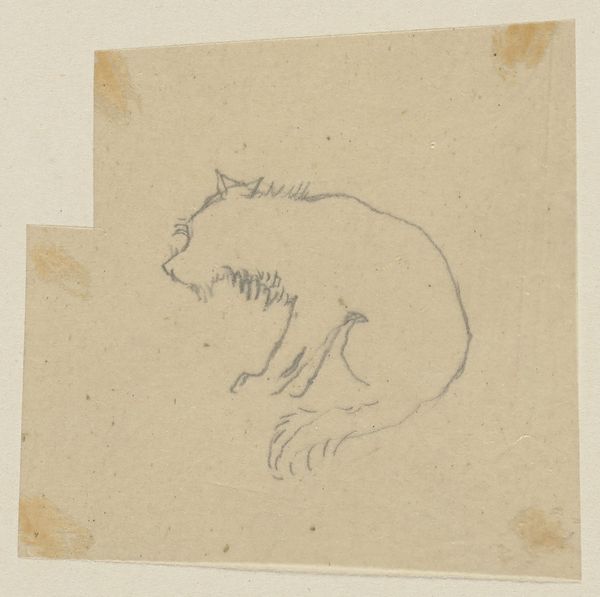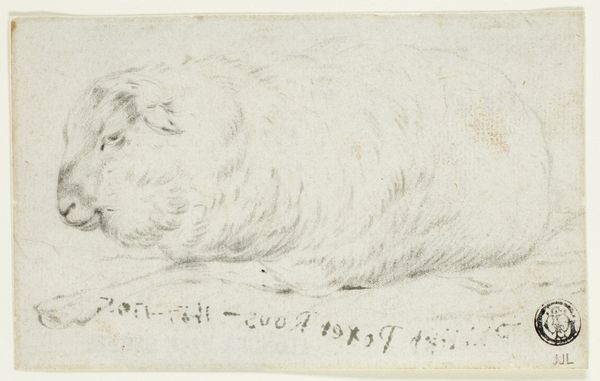
Schematische tekening van een zittende kat 1782 - 1837
0:00
0:00
pieterbartholomeuszbarbiers
Rijksmuseum
drawing, paper, pencil
#
portrait
#
drawing
#
16_19th-century
#
animal
#
figuration
#
paper
#
pencil
#
realism
Dimensions: height 118 mm, width 207 mm
Copyright: Rijks Museum: Open Domain
Curator: This is Pieter Bartholomeusz. Barbiers's "Schematische tekening van een zittende kat", made between 1782 and 1837. It’s a pencil drawing on paper, housed here at the Rijksmuseum. Editor: It’s delicate, isn’t it? So minimal and precise. The pale hues lend it an ephemeral feel. You sense the cat is about to evaporate off the page. Curator: Note the material conditions. The support is just simple paper, suggesting perhaps a study or preparatory sketch. Pencil, readily available, facilitates this kind of immediate documentation. Editor: Absolutely, and consider how Barbiers used that readily available pencil. There is an underdrawing and gridding still visible! It appears the work was constructed within very rigid boundaries. Curator: The labor clearly leans into careful study, rather than elaborate presentation, more an object of function over spectacle, wouldn’t you agree? Editor: Perhaps. The way Barbiers uses line, for instance, has a real elegance. Look at how a few strokes delineate the fur and create depth. The pose—feline languor perfected. It is as though the artist found and isolated only the most pertinent data for 'cat-ness' to distill into graphic form. Curator: Feline labor existed beyond the domestic space during the time this piece was produced; think about feline contributions within the economy: catching mice in mills to help preserve grain, for instance. Editor: That may well be; still, the composition has a serenity, and its success stems from those carefully placed lines that describe the animal’s form so efficiently. A formal harmony prevails. Curator: The scale further suggests intimacy. Was it made for display or more for the artist’s exploration of form and his relationship to animal labor? These are the questions the materiality invites, I feel. Editor: I think we can agree it gives us a keen glimpse into a singular artistic perspective and relationship with the feline form. Curator: A final thought regarding its function within 19th-century Dutch society could offer even more clarity for the contemporary viewer.
Comments
No comments
Be the first to comment and join the conversation on the ultimate creative platform.
